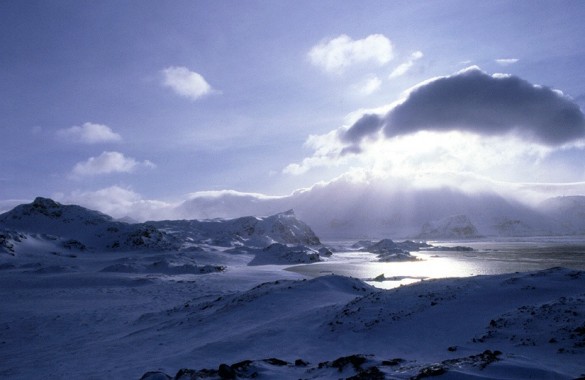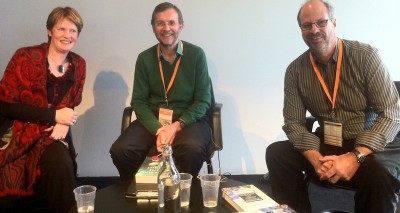Bring your imagination to the windiest, harshest place on the planet, a place of ferocious hurricanes and spectacular scenery. Antarctica.
During this year’s Sydney Writers’ Festival two authors discussed their passion for the Big White Desert: Jesse Blackadder, author of three novels including Chasing the Light, and Alasdair McGregor, award-winning author, painter, photographer and architect. His latest book is Antarctica.
Antarctica has been a passion for McGregor since his late 20s. As well as the 3000-metre high mountain, seals, and penguins on the beaches, he has witnessed how the place changes, its restlessness and fearsome presence. He believes that each time anyone returns from “the frigid and the infernal” Antarctica, “a place of illusion”, they come back changed.
Antarctica is a real wilderness, not altered by human hand. McGregor said when you see this you come face to face with yourself. Antarctica is indifferent to you – there’s a sense of being small and insignificant.
All this is explored in Antarctica, in which McGregor draws on a collection of fictional and non-fictional stories of the ice: “a land of unsurpassed desolation”. Contributions include Helen Garner, who is fascinated with ice and Ursula Le Guin, who rejects the notion of Antarctica as ‘nature as foe’.
Interestingly, Blackadder enjoyed the feeling of miniscule humanity McGregor refers to because she was safe there, not in survival mode.
Her novel Chasing the Light was set in the 1930s when Antarctica was largely unchartered. There was no sense of expectation anchored in images; the lands were unmapped, which resulted in a fear of the place. Even today parts are unexplored as the ice conditions change so much each year.
Blackadder recalls a longing to go to Antarctica, of dreaming and imagining it. Reality was different to the fantasy but no less powerful. There were smells and colours she didn’t expect. The fantasy involved being alone in that place but in reality she couldn’t be alone often as she was with a crew. And it’s a pretty dangerous place.
She felt grief at losing the imagined Antarctica and channelled that into her novel. She thought she’d be able to write better descriptions of landscape after she’d experienced it and developed a real admiration for people who can describe what an iceberg looks like because there is no language for it. Antarctica has no literary heritage but it was written about before it was seen. Aristotle was responsible for coining the name Antarcticos, the bear over the northern skies.
Perceptions of Antarctica have altered in recent decades. In Chasing the Light Blackadder explores the difficulties of visiting Antarctica from a women’s perspective. Attitudes about women going to Antarctica have changed but back in the 1930s there was a great psychological and social struggle to make it acceptable for them to go.
She wove into Chasing the Light, with creative licence, the true story of a race between three pioneering women to get to Antarctica: two Norwegians, Ingrid and Mathilde, and Lillemor, from Britain. Blackadder used their real names, wanting to honour those women whilst portraying them as flawed characters. None of their actual words were documented so the characters were fictional.
McGregor noted that Antarctica provides writers with an opportunity to cross various genres. It lends itself to both fact and fiction; particularly fantasy and sci-fi. And modern writers have a preoccupation with how Antarctica and the planet are changing.
“In an era of global warming, Antarctica has become a symbol of our planet’s fragility,”’ he said.
Above all, McGregor encourages writers to think with their eyes and soul about “that sweep of savage splendour”.






